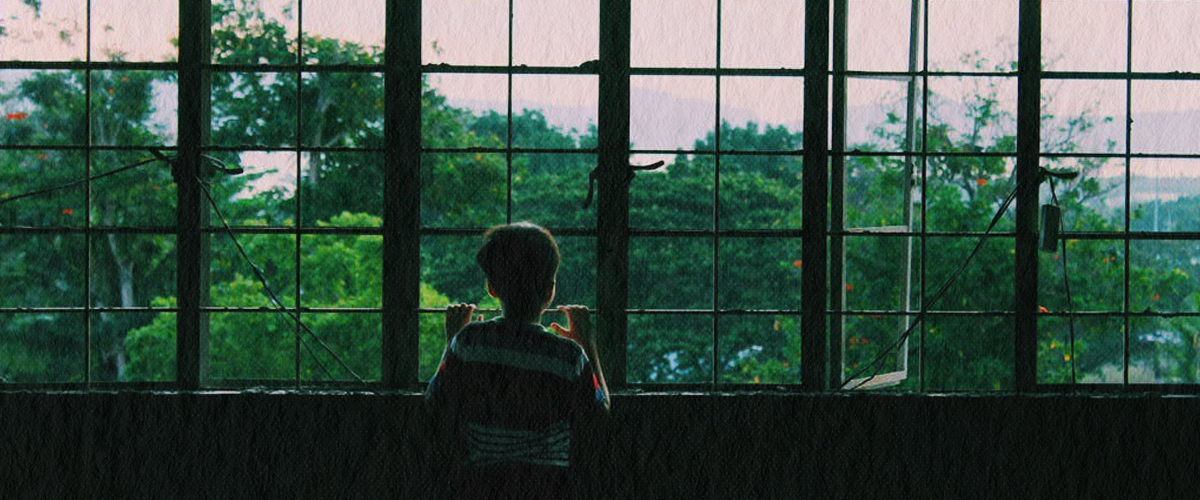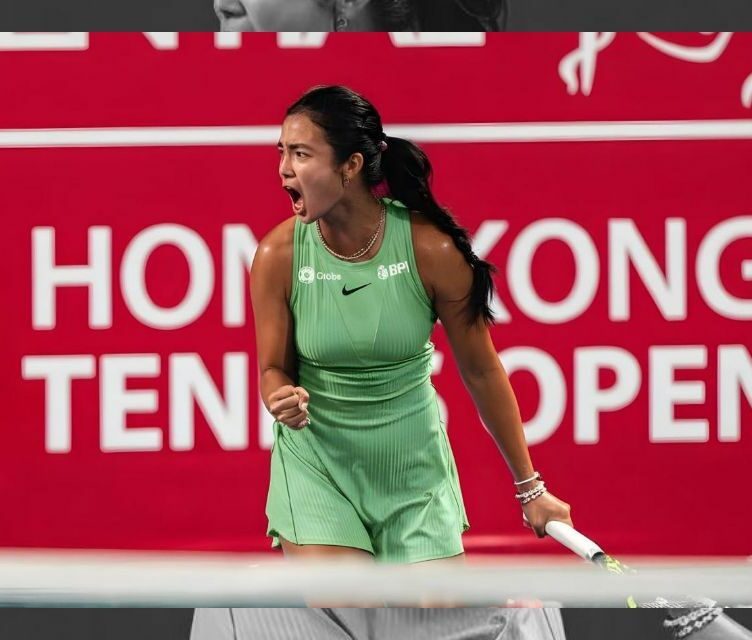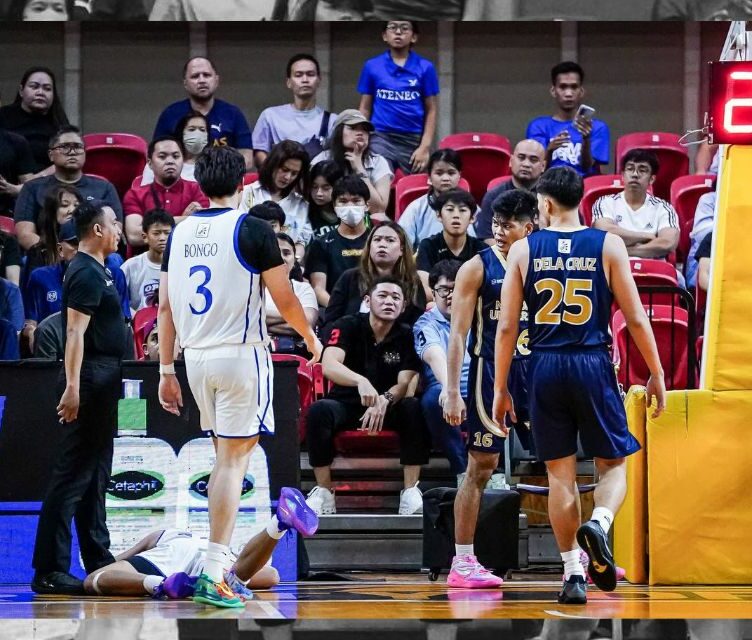WE often want justice to be simple: a case of white versus black, good versus bad, and right versus wrong.
But when it comes to children, especially those as young as 10 years old, the reality becomes far more complicated. It forces us to ask unsettling questions.
How much of their choices are truly theirs and how much of it are products of the circumstances they were born into?
What does accountability look like when innocence and immaturity are still part of the picture?
For many, justice demands consequences. An eye for an eye. Perpetrators must be punished. They must face the consequences of their actions. And those consequences must involve being put behind bars, no matter their age, class, or physical capabilities.
After all, justice must be served.
Yet for a child, punishment must not be the only lens. Behind every wrongdoing is a story of upbringing, of a household marked by poverty, and of choices informed by trauma and survival.
And here is often when the line of justice and vengeance becomes blurred.
The tension between the society’s need for safety, the victim’s call for justice, and the child’s right to rehabilitation is the heart of this debate.
It is not about excusing harm, nor about letting children “get away” with crime.
Rather, it is about asking: How do we balance accountability with compassion? How do we ensure that in seeking justice, we do not abandon a child’s chance to grow, heal, and change?
The Push to Lower the Age of Criminal Liability
In the past few days, the proposal of lowering the criminal responsibility to 10 years old has taken the internet by storm. Netizens have voiced out both support and criticism against this notion, citing their own opinions and experiences regarding safety.
Senator Robin Padilla was at the forefront of this proposal. Just recently, he filed for Senate Bill No. 372, which aims to lower the age of criminal responsibility for heinous crimes. These includes parricide, murder, rape, kidnapping with killing or rape, robbery with homicide or rape, destructive arson, and serious cases under the anti-drug law.
The senator said that it is high time we review Republic Act 9344, also known as “the Juvenile Justice and Welfare Act,” to better address the issue.
“I am deeply disturbed by the behavior of minors in recent times. I am referring to the involvement of children in illegal activities ranging from what are considered petty crimes on the streets to heinous crimes,” said Padilla during his privilege speech.
“If it’s difficult to talk about it, it’s even more difficult to hear the cries of the victims and their families who are still seeking justice. We are not promoting the violation of youth rights, but we can no longer turn a blind eye to the fact that there are young people capable of planning and committing horrific crimes,” he said.
He continued to emphasize that the rehabilitation and intervention programs through the government-funded “Bahay Pag-asa” is futile in the matter.
“Bagamat mahirap maunawaan, kailangan nating tanggapin na merong mga kahit wala pa sa ligal edad—nililinaw ko, hindi ko nilalahat—ay alam na po na ang kanilang ginagawa ayon sa kanila mismong kapasyahan,” said the senator.
Like the netizens, the Senate’s opinion on the bill was divided.
For example, Padilla’s co-Senator Raffy Tulfo backed his proposal.
“The parents and family members of their victims are often left frustrated due to their inability to get justice. If we are going to talk about facts, that is a fact,” said Raffy Tulfo.
But Senator Kiko Pangilinan— author of RA 9344— naturally opposed this. He argued that the solution lies not on amending the law, but on properly implementing it.
“Palagay ko, masyadong mababa ang 10 years old. Although even if you are 10 years old at ikaw ay nag-commit ng rape, minimum one year, mandatory confinement. Pwedeng ma-extend dahil ‘yan naman ang sinasabi ng batas,” said Pangilinan.
Likewise, Senators Erwin Tulfo and Sherwin Gatchalian backed Pangilinan.
“Mr. President, kung gusto po natin maipatupad na maayos ang batas na ito, kailangan po natin ng pondo, mabigyan po ng pondo ang DSWD para makapagpagawa po ng mga facilities sa bawat lungsod. Hindi lang po lungsod, ang suggestion ko po, pati munisipyo,” said Erwin Tulfo.
Gatchalian, meanwhile, has consistently opposed lowering the age of criminal liability—even back when the proposal set it at 12 years old.
In his 2019 interview, Gatchalian cited the success of their work in Valenzuela in dealing with Children in Conflict with the Law (CICL), just by following and implementing RA 9344 properly.
“I am not in favor of lowering down (the MACR) precisely because we have executed the law in Valenzuela. ‘Yung experience namin, maganda. Seventy-five percent ng mga batang pinasok don, nabalik namin sa pamilya, nag-aaral,” said Gatchalian in 2019.
The senator still holds the same opinion as of today. He stressed that reforming a child’s character requires time, patience, and understanding, but also pointed out the importance of providing adequate support for prevention programs.
The Truth on the Ground
But dealing with children in conflict with the law is a reality not everyone gets to face—sometimes not even senators, who are often confined to their offices.
The burden instead falls on those working on the ground.
Republicasia spoke with advocates and social workers from the Humanitarian Legal Assistance Foundation (HLAF), a Philippine NGO that works directly with CICL and Children at Risk (CAR).
One of them was Carmelita Torrefiel, who has worked as a senior community organizer for the Children Requiring Assistance (CRA) program.
Torrefiel—better known as “Tiyang Emy”—has served as a barangay worker for 20 years and has been part of the CRA program for 13.
“Nag start ako noong pinasa yung RA 9344,” said Tita Emy, recalling her start at the CRA.
“That was 2006. Nag-apply ako sa barangay. Sa barangay Bagbag sa Quezon City. Una nilagay nila ako sa VAWC (Violence Against Women and Children) [desk]. Pero noong pumutok nga yung RA 9344, nilipat ako doon ng kapitan namin. Simula doon, nagsimula na ‘yung pagtingin, pag-aaral [ko] sa sitwasyon ng mga bata.”
Tita Emy witnessed the implementation of RA 9344 from its very beginning. Even the language shifted with the law’s passage—children were no longer to be “arrested” or “caught,” but “rescued.”
This change reshaped how communities viewed juvenile offenders in their full capacity. It was then that she began asking herself: why are children driven to commit crimes?
As a barangay worker and an HLAF staff, one of Tita Emy’s primary duties is to conduct a situational analysis. This means investigating the household situation and domestic environment.
“Nakikita lang nila yung kasalanan ng bata. Dapat ang nakikita nila yung ugat ng pagkakamali ng mga bata. Mga batang nag-aasawa nang maaga,” said Tita Emmy.
She emphasized that judgments against children often take precedence, while their condition and cognitive development—despite being scientifically proven factors—are too often disregarded in their cases.
“Minsan delayed sila [sa cognitive development] sa iba’t ibang dahilan. Hindi natutugunan ‘yung kanilang needs. Tapos yung community na kanilang kinabibilangan, hindi ganoon nakakatulong doon sa development ng mga bata,” she explained.
She also highlighted that many of these children were exposed to violence at an early age, which increases their tendency to replicate it. Coupled with the lack of protection in their households, this often leaves their needs unmet.
“Siyempre yung impluwensiya ng kanyang kapaligiran. Malaking bagay ‘yon bakit nai-involve sa crime yung mga bata. Tapos yung hindi natutugunan yung mga emotional needs ng bata. ‘Pag busy si nanay, busy si tatay, sino makikipag-usap sa bata?” said Tita Emy.
When children are deprived of attention or when their needs are left unmet at home, they often seek comfort in those closest to them. More often than not, it is their peers—who then become the strongest influence on their behavior.
This lack of understanding of children’s psychology and development is only made worse by gaps in the implementation of RA 9344.
With fourteen years of experience as a social worker and program staff at HLAF, Juanito “Kuya Itoy” Vinluan has seen firsthand how the law’s execution often falls short of its intent.
“Kagaya ngayon na inuungkat ng recent administration [yung] flood control project, baka pwede din ungkatin, kanino ba napunta yung pondo para sana dito [RA 9344] sa pag implement?” asked Kuya Vinluan.
He highlighted that although it was stated in the law that many LGUs should have their own Bahay Pag-asa— the rehabilitation center for the CICL— they are often non-existent.
Kuya Itoy attributed this to possible corruption within LGUs.
“Siguro ang too lenient is protecting the interest din. Hindi yung law itself. Baka kasi, may takot na rin silang mabuking for the previous years meron naman palang pondo pero hindi naibigay nang tama sa bata,” he said.
“Kaya ang gusto nila is baguhin yung current na criminal age of responsibility without—again— looking at sino bang mag-iimplement niyan. Asan ‘yong tinatawag na proper Bahay Pag-asa, functionality of LCPC. For the longest time, baka kailangan makita din yung accountability.”
Kuya Itoy also pointed out that social workers are burdened with heavy workloads, yet receive little to no proper compensation for their efforts.
Some social workers, he noted, remain in precarious positions—forced to split plantilla posts or relegated to job order status—leaving them without security of tenure despite the critical nature of their work.
“Baka may mga social workers din on the local government unit na until now hindi sinusunod yung local government code, na kung ang chief ng isang unit ay dapat sa kanyang linya of the profession. Kasi nasa LGC naman ‘yon,” said Kuya Itoy.
“Ilan ba yung ratio ng mga court social workers? Kulang din. And then pabibigatin mo pa yung trabaho ng court social workers umaaray na nga.”
Kuya Itoy shared that many people he knew—including some of his colleagues—were deeply committed to the work, yet the job barely provided enough for them to make ends meet. This led them to seek their opportunities elsewhere, leaving a growing gap in an essential field.
“Ano bang aasahan ko sa sistema na ayaw naman bigyan nang maayos na plantilla yung mga nasa groundwork?” he said.
He explained that the situation creates a domino effect. When problems are left unresolved at the level of the most vulnerable members of society, these issues inevitably ripple outward, affecting families, barangays, communities, and even local and national governments.
Instead of lowering the criminal age of liability, Kuya Itoy hopes that the government would first try to implement the law to its fullest extent to see the best possible outcome.
He also asked for justice— not just for the victims and CICLs— but also for those who are trying their best to accommodate the law despite the failure of its implementation.
“May maging accountable bakit hindi pa rin maayos yung pagpapatupad ng batas,” said Kuya Itoy.
On Misconceptions about Juvenile Justice
Atty. Maria Luisa “Loi” Villarin initially envisioned a different path when she entered Ateneo Law.
As a Certified Public Accountant, she could have easily pursued a lucrative career as a tax lawyer—an in-demand profession across industries.
But her years in law school took an unexpected turn. Through her professors, she was introduced to the human rights dimension of the law, a perspective that would eventually shape the course of her career.
“So the initial plan was mag ta-tax lawyer ako. Pero sa first year ko sa Ateneo, marami akong professors na human rights lawyers. So, nainspire ako sa kanila, ta’s nag join ako ng ateneo human rights center as an intern,” recalled Loi.
“As an intern ng Ateneo human rights center, pinili ko yung HLAF as the organization where I want to spend my internship. So doon nag start yung journey ko.”
She started her professional journey with HLAF in 2020 and now serves as its Deputy Executive Director.
As a lawyer, Loi saw the many misconceptions of the public regarding RA 9344.
“Pagdating sa claim na ‘to, misconception talaga to e. Na lenient kuno yung 9344 for minors and CICLs,” she said.
She even corroborated the latter’s experience of the lapses when it comes to the execution of the law.
“Kasi, ang unang dapat inaaalala is, bakit ba nagkaroon ng 9344? Yung sagot doon is, before, children as young as 9 years old, 6 years old, nakukulong ‘yan sa loob ng adult jail,” she explained. “So obviously, imbes na natulungan mo ‘yung bata na umalis sa ganoong klaseng buhay, lalo mo pang pinukpok sa kanila yung hardened criminal life. Tinabi mo pa sila sa mga ano, member ng gangs. Siyempre doon nila makukuha lahat ng bad influence.”
Loi recalled how, even with RA 9344 in place, some minors still end up detained in police jails.
By the time they are released, many already bear gang tattoos and affiliations. This, she stressed, was precisely what the law sought to prevent—to keep children from being pushed into lives that would harden them as criminals while they were still so young.
“So ‘yon siguro yung kailangan una natin ma-address, yung purpose talaga ng law. So pagkatiningnan mo yung batas, makikita mo doon, heavy siya on prevention. Makikita mo, the focus of the law [is] how do you help children prevent committing crimes?”
What Loi described is the concept of restorative justice. Restorative justice focuses on repairing harm and helping offenders take responsibility, rather than just punishing them.
This approach is crucial for children, whose minds and behavior are still developing, giving them a chance to reform and reintegrate into society instead of being treated as hardened criminals.
“Sa totoo nga lang, ang ganda ng 9344 e, ideally ha. Kasi ang problem naman nito is implementation. Pero sa ganda ng 9344 kasi yung pangarap nito is individualized intervention programs for children,” she said.
She explained that programs for children in conflict with the law are not one-size-fits-all. Each child’s environment, family situation, education, mental and physical state must be considered.
The goal, she said, is to identify their needs and provide the right support so they can return to the right path and grow into responsible members of society.
“Individual dapat yung program. Individualized dapat yung program niya– intervention program niya. Ganoon siya kaganda in that sense and masasabi ko rin, you can’t say that it’s lenient,” said Loi.
“Kasi for the law to require the social workers, local stake holders to look at the child, hindi lang on the surface pero deeper diba. How can you say that that’s lenient when it asks so much from the professionals involved?”
She also addressed common misconceptions that the law allows juvenile offenders to “get away” with their crimes. According to Loi, this is far from the truth.
Serious offenses trigger specific procedures based on the child’s age. Children under 15 may be placed in intervention programs rather than prisons, but this still holds them accountable while addressing their development and needs.
Meanwhile, those aged 15 to under 18 undergo an assessment of their discernment, which guides prosecutors on the appropriate legal response. In this context, discernment refers to the child’s ability to understand the difference between right and wrong and to comprehend the consequences of their actions.
In a new jurisprudence, the distinction of discernment in an accused juvenile is determined by the court.
If a judge ruled that the accused is capable of discernment, then the trial will proceed normally.
In all cases, the child is not excused—the law ensures accountability through tailored interventions rather than automatic incarceration.
What is justice?
“Kung meron akong gustong baguhin, imbes na atakehin nila yung batas kasi hindi nila nakukuha yung justice na hinahanap nila, siguro dapat tanungin muna is ano ba yung justice na gusto talaga natin. Nasasagot ba ng pagpapakulong sa bata yung justice na hinahanap natin?”
This was the question posed by Loi which she also answered herself.
“Ako sasagutin ko kayo ng diretso, hindi. Hindi yun yung sagot kasi kung tutuusin, ‘pagka naibalik natin na mas marami pang batang nakukulong lalo lang tayong nagkakaroon ng members ng society na non-functional. Na hindi man lang nakaka-contribute sa society na gusto natin buuin. So sa’min sa HLAF ang inuuna taaga namin na type of justice is restorative justice,” she said.
Loi’s point underscores a fundamental distinction: justice is not revenge.
Revenge satisfies anger and seeks punishment, but justice—especially when it comes to children—requires understanding, accountability, and the opportunity for growth.
There is no easy way out in tackling this problem. We must approach it critically, without disregarding the victims, and confront the root causes with ethics and thoughtfulness.
Quick fixes—lazy, bandaid solutions—may satisfy immediate outrage but often do more harm than good.
Restorative justice, by contrast, focuses on repairing harm, helping children understand the consequences of their actions, and providing the support they need to reintegrate into their communities.
If we can forgive corrupt politicians and re-elect them again and again despite blatant evidence of wrongdoing, then putting children behind bars exposes a brutal hypocrisy.
We protect adults fully capable of understanding their corruption, yet we punish the young for circumstances they cannot control.
It takes a village to raise a child. But if that child grows into a hardened criminal, the village—society—must stare in the mirror and confront the failure of its own conscience.
How useful was this post?
Click on a star to rate it!
Average rating 5 / 5. Vote count: 1
No votes so far! Be the first to rate this post.
We are sorry that this post was not useful for you!
Let us improve this post!
Tell us how we can improve this post?







